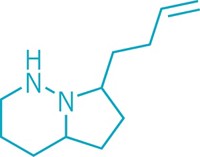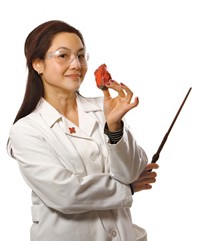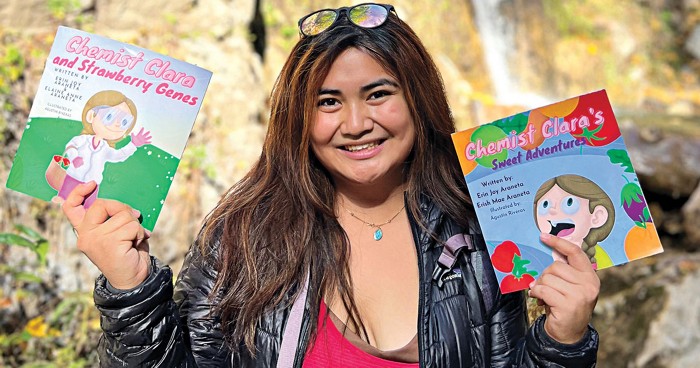Advertisement
Grab your lab coat. Let's get started
Welcome!
Welcome!
Create an account below to get 6 C&EN articles per month, receive newsletters and more - all free.
It seems this is your first time logging in online. Please enter the following information to continue.
As an ACS member you automatically get access to this site. All we need is few more details to create your reading experience.
Not you? Sign in with a different account.
Not you? Sign in with a different account.
ERROR 1
ERROR 1
ERROR 2
ERROR 2
ERROR 2
ERROR 2
ERROR 2
Password and Confirm password must match.
If you have an ACS member number, please enter it here so we can link this account to your membership. (optional)
ERROR 2
ACS values your privacy. By submitting your information, you are gaining access to C&EN and subscribing to our weekly newsletter. We use the information you provide to make your reading experience better, and we will never sell your data to third party members.
Science Communication
Newscripts
Perceptive pooches and curious kittens
by Katherine Bourzac
August 20, 2021
| A version of this story appeared in
Volume 99, Issue 30
Dogs can sniff out liars

For about 14,000 years, dogs have been hanging out with humans. After all this time fitting into human groups and families, getting meals in exchange for helping people hunt, or simply for being cute and cuddly, how well do dogs know us?
Well enough to sniff out liars, suggests recent research from the University of Vienna (Proc. R. Soc. B 2021, DOI: 10.1098/rspb.2021.0906).
The research team trained pure-bred dogs to find food stashed in one of two covered bowls. A human “communicator” would touch the food-filled bowl, lock eyes with the dog, gesture, and repeat, “Look, this is very good!” Dogs ran up to the food bowl, nosed off the covering, and had a snack.
Then the researchers introduced deception. As the dogs watched, a second human would move the food from the first bowl to the second bowl, either in the presence of the communicator or while the communicator was out of the room.
Then the communicator tried to draw the dogs to the first bowl, now empty. Half of the dogs went to the empty bowl if the communicator hadn’t been in the room when the food was moved—these people, it seemed, were deemed trustworthy and worth obeying. But when the dogs observed that the communicator saw the food get moved, the majority of dogs ignored the communicator and chose the bowl they knew held food.
Terriers were the exception: dogs in this class were much more likely than others to investigate containers indicated by humans who witnessed the food switch. Perhaps, the researchers write, these breeds viewed the suggestion of the empty bucket “as an invitation to explore the first hiding place further.”
Understanding the dogs’ motivations—perhaps a mix of people pleasing, peckishness, and canine curiosity—will require further study.
Chemistry kitten

Cats and chemists are famously curious—a quality celebrated in an ongoing series of illustrations by scientific artist Kelly Stanford.
Stanford’s drawings are a riff on the cartoon cat Pusheen, who started her internet career in a web comic by Clare Belton and Andrew Duff in 2010 and has since been turned into memes. Stanford’s Chemistry Pusheen drawings show the smiling gray cat pouncing on a C60 ball, synthesizing chemical compounds, and analyzing experimental results in hyperrealistic but whimsical lab settings.
Stanford, who lives in Manchester, England, is currently starting a PhD program in science communication at the University of Hull. Her master’s thesis explored the effectiveness of a card game in teaching about climate change—and showed that adding art to the cards helps players learn more.
When lockdowns started last spring, Stanford, a longtime fan of Pusheen, wanted a fun side project. “I wanted to brighten people’s day during the pandemic,” she tells Newscripts. She began posting science-themed Pusheen illustrations on Twitter (@thelabartist)—and these pictures have since ended up in conference slides and on classroom walls.
Stanford says drawing Pusheen in the lab has been a fun way for her to learn more about chemistry. Stanford learns by reading, watching reaction demonstrations on YouTube, and asking chemists to send photographs of their lab setups. Getting all the details right can take a lot of time for what is meant to be a fun side project, so she sometimes has to delay her promised posts, Stanford says.
Her favorite Chemistry Pusheen is a depiction of the kitten making Bakelite, the hard plastic used to make old-fashioned telephones—a project she’d like to carry out herself. After months of drawing chemistry lab setups, Stanford is just as excited to get into the chem lab as researchers who’ve been working from home. The first thing she wants to do is get her adviser, a chemistry professor, to make Bakelite with her.

Please send comments and suggestions to newscripts@acs.org.








Join the conversation
Contact the reporter
Submit a Letter to the Editor for publication
Engage with us on Twitter